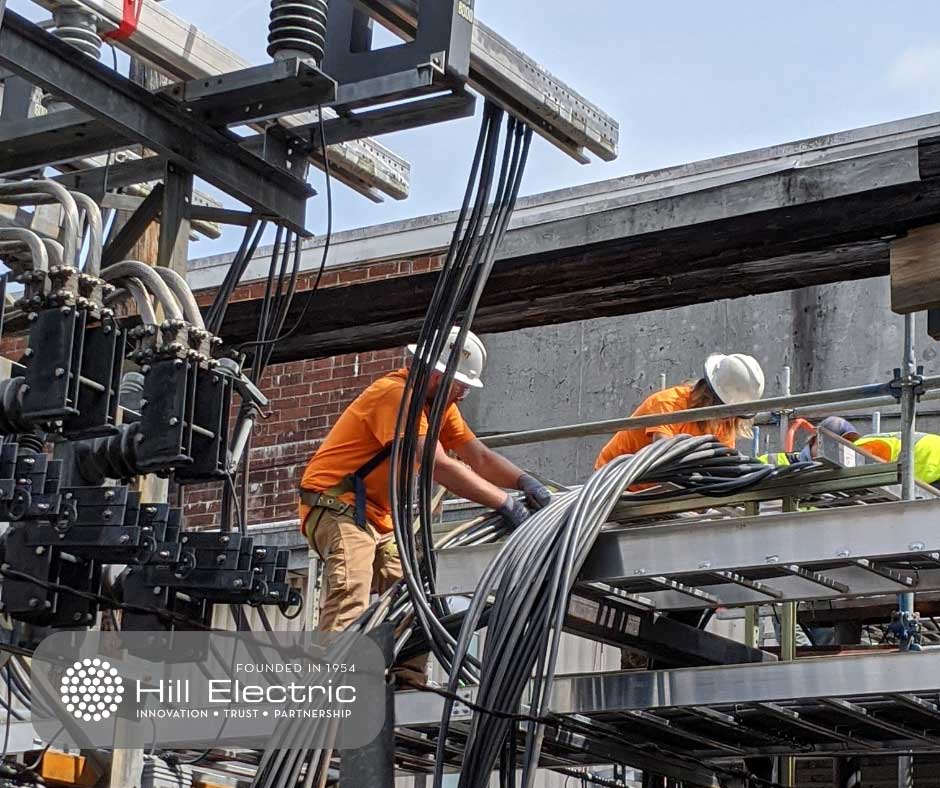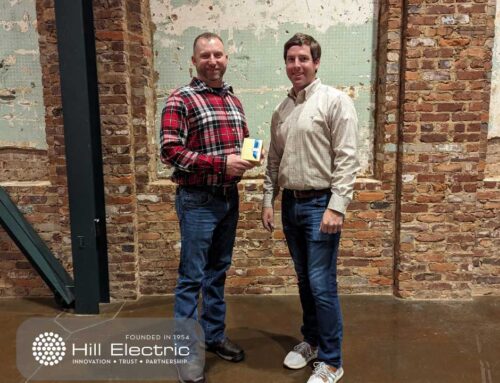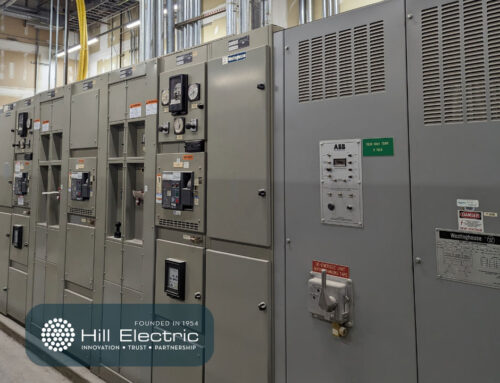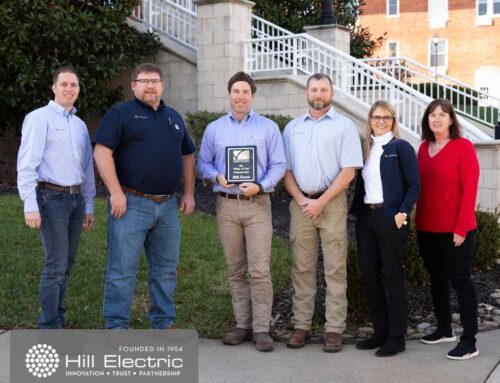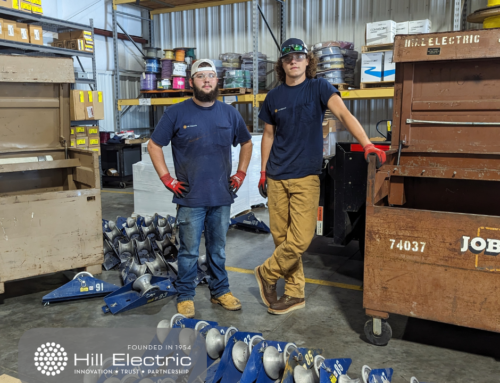In the electric world, there’s a multitude of definitions discussed for the term substation. In this blog, we are going to discuss an industrial facility view of a substation. At Hill Electric, we are committed to educating not only our team, but the larger electrical community on safety and skills in the power industry.
What are Substations?
A substation is a variety of devices integrated together to convert main distribution power into utilization power. Substations can have several complex components such as transformers, lightning arrestors, capacitor banks, voltage regulators, switches, and fuses. All of these components work together to ensure the quality of the power provided and to prevent major outages. One typically sees substations in fences around main power lines or near manufacturing facilities.
What are Unit Substations?
A unit substation takes the incoming utility service and converts it to meet the facility operating requirements. This consists of a medium voltage section, a transformer to reduce voltage, and a low voltage section. These sections are integrated together mechanically and electrically into one physical unit.
The medium voltage section will have one or more of the following: switches, fused switches, or breakers. These are used to pass medium voltage to another unit substation. They also power and protect the transformer of the unit substation. The typical voltages we see on the medium voltage section is from 4KV to 20KV.
The transformer section reduces the voltage from the medium voltage to low voltage. The transformer will contain the primary and secondary connections, monitoring equipment, and sometimes fans.
The low voltage section includes a main breaker followed by the distribution breakers. This section distributes the power through the plant directly to distribution power breaker panels, or large machines. The voltage on this side is 1,000V or less. The most common voltage is 480V with older plants utilizing 600V.
What is an alternative to a unit substation?
It is common for medium and small facilities to have a transformer or multiple transformers mounted on the outside of the facility, commonly referred to as pad mount transformers. These are powered directly from the utility and are typically owned and operated by the power utility. These transformers provide power for the facility at the required voltage. The facility is responsible for the power cables that leave the transformer and enter the facility. These cables will enter a low voltage distribution electrical gear, similar to the low voltage section of a unit substation. This electrical gear includes the main utility power protection. It also includes protection for the distribution of the power to machines and smaller distributions panels through breakers or fusible disconnects. The facility service coming from the pad mount transformer is 2500A or less. Sometimes, there are higher amperage deliveries from a pad mount transformer, but typically, utilities are focused on keeping the transformer size smaller.
Is a pad mount transformer or unit substation system best?
To know what system best fits your needs, it’s important to know what your requirements, future plans, and available resources are. Once you’ve gathered that information, you can look into the benefits of each system and decide what works best.
Unit Substation Pros
- Facility has control of the operation of the system and does not need to rely on the support of the utility provider.
- Size of available power is determined by the unit substation and not the utility transformer sizing.
- High voltage distribution can be utilized to deliver power to the location of the load. The same amount of total power can be transmitted on a smaller cable at higher voltage vs. lower voltage. You can eliminate long runs of expensive feeders at lower voltages.
Pad Mount Transformer Pros
- Transformer cost and maintenance is a burden of the utility provider.
- Eliminates the need for medium voltage equipment, the maintenance, and owner training / knowledge that are involved.
- Typically, available fault current and equipment cost are lower at the reduced size service.
- The elimination of the medium voltage equipment and transformer allows for the distribution system to have a small electrical footprint.
Whether you’re new to the world of substations, or well trained in these systems, hopefully you learned something new or were encouraged to think a bit deeper on this critical component of electrical power distribution. Through exploring unit substations and pad mount transformers, it’s important to remember that each of these solutions plays a vital role in ensuring the efficient and safe distribution of electrical power within diverse environments. If you’re in need of electrical expertise and guidance, Hill Electric Company offers a variety of services throughout our service areas in the Upstate of South Carolina.
Written by David Wolke, Vice President of Hill Electric

